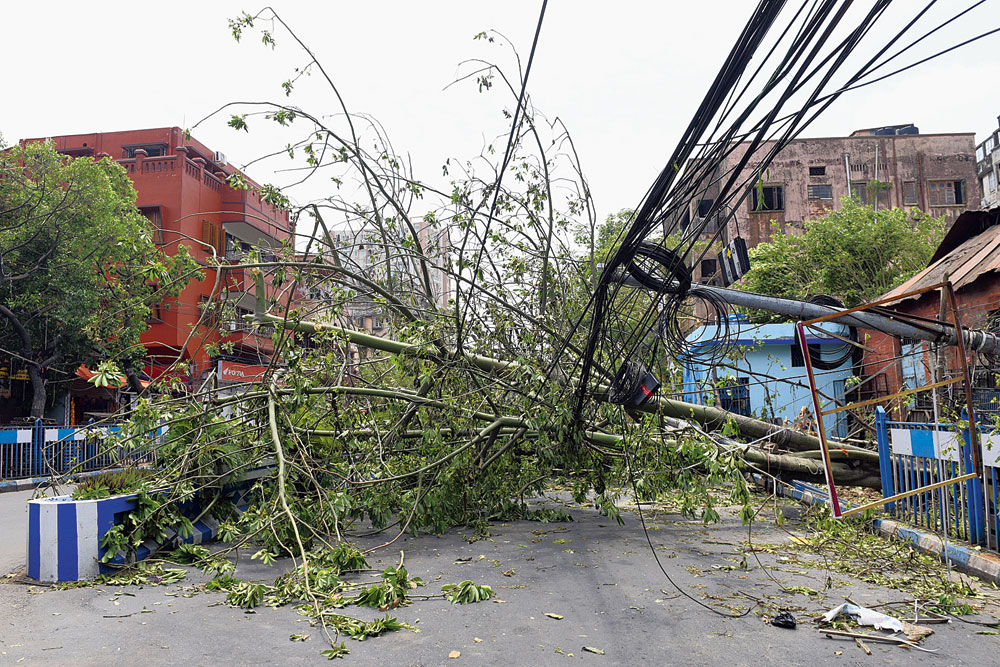Civic officials have attributed the high count of electric poles felled by Cyclone Amphan to the weight of cables on them.
The Calcutta Municipal Corporation has estimated that around 4,000 electric poles have been uprooted across the city and from most of them a mesh of wires used to dangle.
Some of the cables were power, broadband and cable TV wires. Often, it is difficult to distinguish one from the other.
Many of the cables have become defunct but they are all jumbled up and they keep hanging in various parts of the city.
Civic officials said that ideally there should be overhead electric wires only where there are no underground lines.
But most cable TV and broadband operators tie their cables around lamp posts because the underground route is labour and technology intensive.
“A pole with a few wires can withstand the wind force but an overload of wires adds to the weight of the pole. By tying cables to poles, the surface area of the pole increases, causing it to topple when a storm blows,” said an engineer in the corporation.
Physicists in the city said the wires hanging from the poles, mostly jumbled up, resist the air flow.
“The weight of the wires pull the pole downwards. Because of the hanging wires, the surface area of the obstruction to the air flow is more, increasing the effect of the wind on the pole. That increases the chance of the pole getting uprooted,” said Emdadul Islam, a former director of the Birla Industrial & Technological Museum.
Former mayor Firhad Hakim (he is now chairperson of the CMC’s board of administrators) had repeatedly told cable operators and internet service providers to remove the defunct overhead wires.
He had also given them an ultimatum and a deadline to remove the defunct wires or at least mark the live wires so that the corporation could remove the ones not in use.
Metro has been highlighting the wire menace in the city for several years.
The city has at least seven multi-system operators that transmit TV signals through cables and more than 12 broadband service providers, which provide internet connections using the same method.
Since MSOs and broadband service providers compete with each other across the city, a pole in any neighbourhood is likely to have wires of many of them.
The mesh of wires dangling overhead also pose a threat to people on the roads.
In fact, the fire at Bagree Market had brought to the fore the hazard of the overhead mesh of wires. Hydraulic ladders had been deployed to spray water on the fire at Bagree Market but they could not be used because of the wire mesh.
The corporation had said that since they did not know which were cable TV wires and which were power cables, they could not cut the lines.











